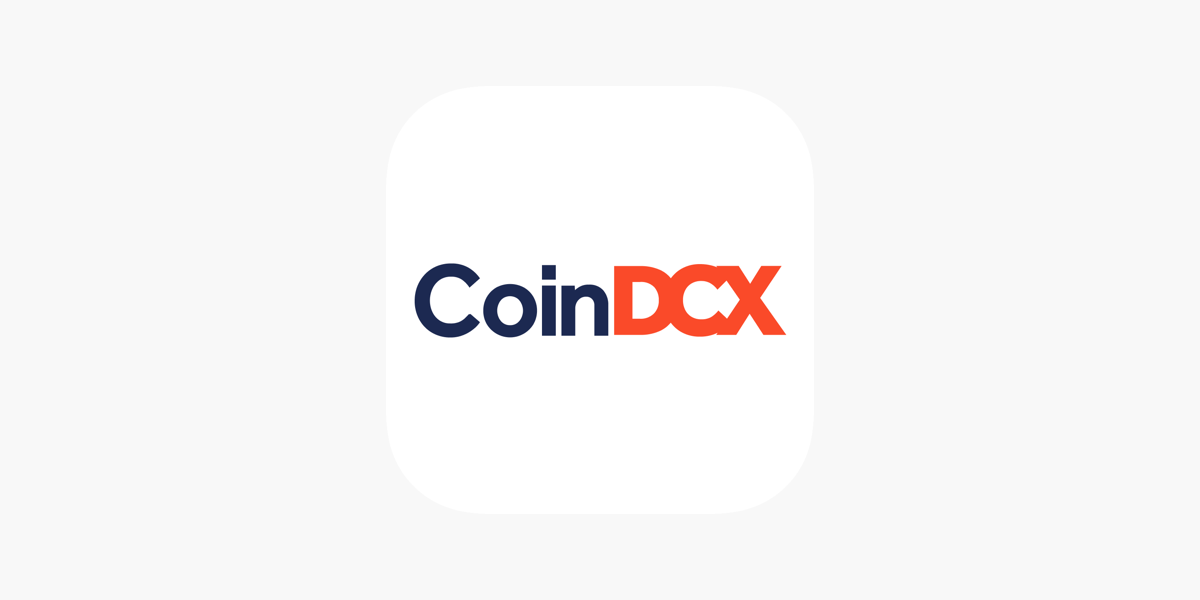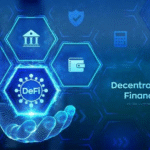-
CoinDCX: India’s Crypto Crown Jewel — and Its Fall from Grace
Launched in 2018, CoinDCX rapidly emerged as India’s flagship cryptocurrency exchange. Known for its sleek UI, wide asset coverage, and backing from institutional giants like Bain Capital, Polychain, and Coinbase Ventures, it wasn’t just a trading platform — it became a symbol of India’s crypto aspirations. By 2023, it had 13 million users and facilitated billions in monthly trading volume.
But in July 2024, this crypto empire faced its darkest hour. A sophisticated cyberattack exposed severe structural vulnerabilities, leading to asset losses, massive user panic, and a breakdown of trust in Indian Web3 platforms. This blog unpacks every layer of this breach — technical, regulatory, financial, and emotional — and what it means for the future of crypto security in India.
-
The Attack Timeline: From Red Flags to Full-Blown Crisis
🔸 July 12, 2024: Reddit and Twitter buzz with reports of unauthorized API activity and suspicious withdrawals, despite users having 2FA enabled.
🔸 July 13, 2024: CoinDCX halts all withdrawals under the guise of “technical maintenance.” Fear and speculation explode across crypto communities.
🔸 July 14, 2024: The platform publicly confirms a cyberattack — the breach involves user API tokens, some personal data, and internal admin-level access.
🔸 July 15, 2024: Global security firms and blockchain forensic experts like CertiK, Chainalysis, and PeckShield are roped in.
🔸 July 18, 2024: Limited withdrawals resume. CoinDCX launches a public dashboard to report ongoing security progress.
The attack may have begun silently weeks before users noticed. The official acknowledgment came only after digital forensics proved the scale.
-
What Was Breached: Beyond Just Money
While CoinDCX has refrained from releasing an exact figure, credible sources suggest over ₹60–70 crore worth of digital assets were drained, including BTC, ETH, USDT, and smaller altcoins.
Assets and Data Reportedly Compromised:
🔸 Hot Wallet Tokens: The breach mostly impacted hot wallets — wallets connected to the internet for frequent transactions.
🔸 Expired Session Tokens: Hackers accessed tokens from stale sessions and bypassed two-factor authentication in some cases.
🔸 Third-Party Apps & APIs: Some trading bots, SDKs, and browser extensions granted unintended access.
🔸 Partial KYC Info: While Aadhaar/PAN details were encrypted, basic user info like names, emails, and phone numbers were leaked.
🔸 Admin Console Access: The biggest red flag — hackers briefly accessed parts of the internal admin system.
Fortunately, the cold storage (offline wallets with most user funds) remained untouched.
-
How the Attack Happened: Deep Dive Into the Exploit Path
This wasn’t a lone wolf breach. It was a coordinated, multi-layered assault using several overlapping vectors:
A. API Token Hijacking
Outdated API tokens were stolen from poorly secured logs and third-party integrations. These tokens allowed attackers to impersonate real users and execute trades or withdrawals.
B. Smart Contract Exploits
Certain smart contracts tied to DeFi services on the CoinDCX platform had missing or weak access controls — especially around high-value operations that should’ve required multisig approvals.
C. Social Engineering
Some employees received phishing emails impersonating SEBI/RBI officials. These emails contained malware or fake compliance forms that tricked recipients into sharing sensitive credentials.
D. Privilege Escalation
Once inside, attackers moved laterally within internal systems, escalating their roles to gain broader access and orchestrate the attack without raising instant alarms.
-
Third-Party Integrations: The Trojan Horse in the Crypto Castle
CoinDCX, like most exchanges, relied on external apps, SDKs, bots, and cloud services. These helped offer services but also widened the attack surface.
Risk Vectors:
🔸 Browser Wallets: Extensions like MetaMask and WalletConnect granted token-level access to some malicious scripts.
🔸 Trading Bots: Many users allowed bots to manage accounts using outdated or over-permissioned API keys.
🔸 Mobile SDKs: Some modules in the CoinDCX app had vulnerabilities leaking logs and tokens via unsecured endpoints.
The takeaway? Convenience via third-party tools often comes at the cost of compromised security — unless tightly managed.
-
CoinDCX’s Emergency Response: What They Did Right — and Wrong
✅ Actions Taken:
🔸 Immediate Withdrawal Freeze: Slowed asset loss.
🔸 Collaboration with CertiK, Chainalysis: Helped trace transaction flows.
🔸 Bug Bounty Relaunch: Invited white-hats to find undiscovered issues.
🔸 Mandatory API Key Rotation: Reduced stale key risks.
🔸 Public Status Page: Helped maintain some transparency.
❌ Missteps:
🔸 Delayed Disclosure: Users weren’t informed fast enough.
🔸 Vague on Compensation: Still no clear plan for 100% reimbursement.
🔸 No User Alerts: Victims weren’t notified of individual breaches instantly.
In crisis PR, transparency and speed are everything — and CoinDCX fumbled the early response window.
-
Ripple Effects: The Chill Across Indian Crypto Sentiment
The psychological impact was massive:
🔸 Users panic-withdrew assets to cold wallets.
🔸 New user registrations tanked.
🔸 Active traders moved to Binance, Kraken, or Coinbase.
🔸 Crypto Twitter became flooded with “Is CoinDCX safe?” threads.
This breach didn’t just harm CoinDCX — it dented the credibility of India’s entire Web3 ecosystem, from blockchain startups to retail investor confidence.
-
Regulatory Blowback: What RBI, SEBI, and GoI Are Planning
India’s regulators, long skeptical of crypto, used this incident as ammo:
🔸 RBI: Reiterated its warnings on crypto volatility and security risks. Suggested mandatory cybersecurity audits.
🔸 SEBI: Proposed bi-annual security audit reports and real-time transparency dashboards for exchanges.
🔸 Finance Ministry: Accelerated discussions around a crypto bill covering:
🔹 Exchange licensing
🔹 Minimum capital reserve mandates
🔹 Data localization on Indian servers
🔹 Cyber-insurance for exchanges
If formalized, these rules could legitimize crypto — but may also make entry harder for newer players.
-
Lessons from Global Crypto Hacks: Patterns That Repeat
CoinDCX is now part of an infamous club that includes:
🔸 Mt. Gox (2014): Lost 850K BTC.
🔸 Bitfinex (2016): 119K BTC lost via multisig failure.
🔸 KuCoin (2020): $280M stolen — most recovered via aggressive tracking.
🔸 FTX (2022): Not a hack, but fraud that wiped out billions in user assets.
Common Threads:
🔸 Over-reliance on hot wallets
🔸 Poor internal governance
🔸 Lack of transparency around reserves
🔸 No third-party security audits
-
What You Can Do As a CoinDCX User (or Any Crypto Holder)
If you’ve ever used CoinDCX or any Indian crypto platform, do this now:
🔸 Change your password + enable app-based 2FA
🔸 Revoke API keys and browser extension access
🔸 Review full transaction history
🔸 Withdraw assets to a hardware wallet
🔸 Monitor your email and credit/debit card statements
🔸 Delete inactive bots or third-party plugins
Crypto’s a personal responsibility game. You don’t get bailouts — just consequences.
-
Post-Hack Best Practices: Securing Your Crypto in 2025
🔐 Use cold wallets (Ledger, Trezor) for long-term holdings
🧠 Never store passwords or seed phrases in digital notepads
🔁 Rotate API keys monthly
📲 Use security-centric apps (like Authy or Yubikey)
❌ Never trade on public Wi-Fi without VPN
✅ Follow the exchange’s verified handles for announcements
📚 Educate yourself — read, don’t react
Your crypto is only as safe as your operational discipline.
-
The Bigger Picture: Web3 Security’s Next Evolution
The CoinDCX breach could be the “WannaCry moment” for Indian Web3. What we do now defines whether this industry matures — or bleeds users and capital to global platforms.
Expect to see:
🔸 Mandatory security audits for all Web3 platforms
🔸 Exchange insurance funds and custodial guarantees
🔸 User education campaigns on wallet hygiene
🔸 On-chain monitoring becoming mainstream
🔸 Decentralized self-custody platforms (like Uniswap + hardware wallets) gaining adoption
-
Conclusion: Don’t Just Recover — Reinvent
CoinDCX’s cyberattack wasn’t just a hack. It was a siren call — for exchanges, users, regulators, and investors — to evolve.
Crypto in India is still young. Mistakes are inevitable. But repeated ignorance is not. Whether you’re a whale or a ₹500 investor, this moment demands action.
Web3 promised decentralization and financial freedom. But freedom without safety is just chaos.
Let’s build smarter. Let’s build safer. Let’s build again.




